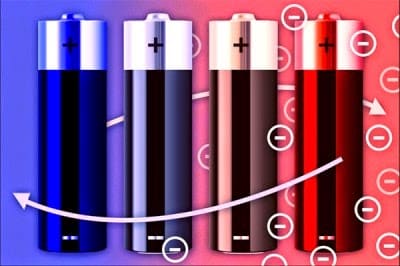Vast amounts of excess heat are generated by industrial processes and by electric power plants; researchers around the world have spent decades seeking ways to harness some of this wasted energy.
Most such efforts have focused on thermoelectric devices, solid-state materials that can produce electricity from a temperature gradient, but the efficiency of such devices is limited by the availability of materials.
Now researchers at Massachusetts Institute of Technology (MIT) and Stanford University have found a new alternative for low-temperature waste-heat conversion into electricity – that is, in cases where temperature differences are less than 100 degrees Celsius.
The new approach, based on a phenomenon called the thermogalvanic effect, has been developed by Yuan Yang and professor Gang Chen at MIT, Seok Woo Lee and professor Yi Cui at Stanford, and three others.
Since the voltage of rechargeable batteries depends on temperature, the new system combines the charging-discharging cycles of these batteries with heating and cooling, so that the discharge voltage is higher than charge voltage.
The system can efficiently harness even relatively small temperature differences, such as a 50 degrees Celsius difference.
To begin, the uncharged battery is heated by the waste heat. Then, while at the higher temperature, the battery is charged; once fully charged, it is allowed to cool.
That extra energy, of course, doesn’t just appear from nowhere: It comes from the heat that was added to the system.
The system aims at harvesting heat of less than 100 degrees Celsius, which accounts for a large proportion of potentially harvestable waste heat.
In a demonstration with waste heat of 60 degrees Celsius the new system has an estimated efficiency of 5.7 per cent.
While the system has a significant advantage in energy-conversion efficiency, for now it has a much lower power density – the amount of power that can be delivered for a given weight – than thermoelectrics.
It also will require further research to assure reliability over a long period of use, and to improve the speed of battery charging and discharging, Chen said.
“This has an efficiency we think is quite attractive.
There is so much of this low-temperature waste heat, if a technology can be created and deployed to use it,” he said.
The research was published in the journal Nature Communications and the source of article is hindustan times.


